#G. and Gorell
Explore tagged Tumblr posts
Text

GoreL 414
G
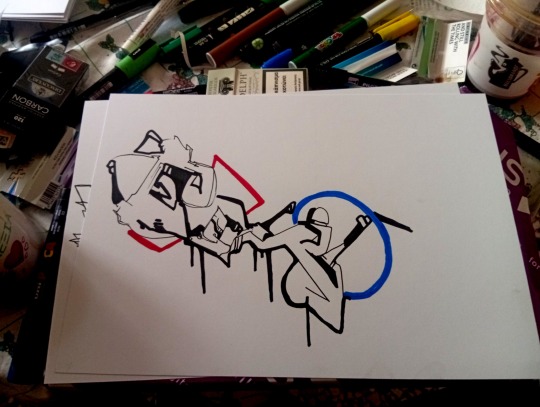
G

GoreL snail 🐌 force
G
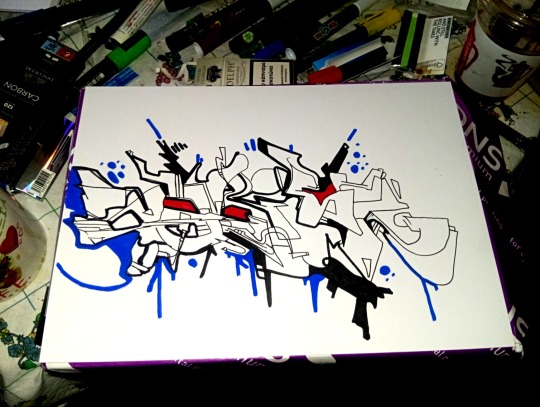
Nuclear power
G
#underground#smog 645#graffiti#dark#alternative#art#vandal tags#halloween#graffittiart#horror#gorel 414#gorel#abstracart
1 note
·
View note
Text
5 Essential Executive Coaching Tips for Beginners
Being an executive coach can be daunting if you're new to it. However, with the right strategies and persistence you'll be able to build professional relationships in which progress is naturally facilitated. Read more, here:
An article by Richard James Rogers (Award-Winning Author of The Quick Guide to Classroom Management and The Power of Praise: Empowering Students Through Positive Feedback) Illustrated by Sutthiya Lertyongphati Executive coaching is a process in which a coach works one-on-one, or in a small group, with executives to help them achieve their goals and improve their professional performance. At…

View On WordPress
#50 top tools for coaching#business coaching#certified coach#Claire Pedrick#classroom#Coach the person not the problem#coaching#ECTs#education#EMCC#executive coaching#G. and Gorell#IAC#ICF#Jones#Jones G and Gorell R#Marcia Reynolds#mentoring#NQTs#pedagogy#Reynolds#school#Simplifying Coaching#teachers#teaching#tech#technology#trainee teachers
0 notes
Text

nodge is angory
#my art dont repost or steal#maximum ride#max ride#the flock#maximum ride series#winged people#nudge#bird kids#birdkids#shes best gril#g orl#gorel#grel
33 notes
·
View notes
Photo

A detail of Barry Faulkner's mural "The Declaration of Indpendence." (National Archives)
Volunteer Sheds Light on Story Behind Rotunda Murals
By Liam Behan | National Archives News
WASHINGTON, July 19, 2019 — More than a million people visit the National Archives in Washington, DC, each year. Most of them make sure to see the Declaration of Independence, the Constitution, and the Bill of Rights. Those documents are enshrined in the National Archives Rotunda, a chamber designed specifically to hold them and decorated with murals depicting our nation’s Founding Fathers. While millions of people have seen the paintings when visiting the Rotunda, most of them likely don’t know the background behind the artwork.
Lester Gorelic, an author and volunteer docent at the National Archives, was captivated by the story, extensively researched the murals, and wrote about them in a 2014 Prologue magazine article and in a longer article on the National Archives History section of the website. Gorelic spoke about the paintings and their history during a noontime talk on July 2 in the National Archives’ William G. McGowan Theater.
23 notes
·
View notes
Text
Eric Ravilious for The Cornhill
The Cornhill Magazine was founded by George Murray Smith in 1859, the first issue in January 1860. It continued until 1975. It was a literary journal with a selection of articles on diverse subjects and serialisations of new novels. From the days when news was slower to make the press and a book was a luxury commodity, these magazines were more of a social service than a magazine is today. Smith hoped to gain some of the same readership enjoyed by All the Year Round, a similar magazine owned by Charles Dickens, and he employed as editor William Thackeray, Dickens' great literary rival at the time.
The stories were often illustrated and it contained works from some of the foremost artists of the time including: George du Maurier, Edwin Landseer, Frederic Leighton, and John Everett Millais. Some of its subsequent editors included G. H. Lewes, Leslie Stephen, Ronald Gorell Barnes, James Payn, Peter Quennell and Leonard Huxley.

Eric Ravilious - Cornhill Title Block, 1932
When Ravilious first worked for the Cornhill Magazine it was 1932 with the wood engraving above, but in fact the first appearance of the block was in 1954 for the 1,000th issue of the magazine. Why it was not used isn’t clear but the magazine have used it a few times since for anniversaries and sometimes on the title pages.
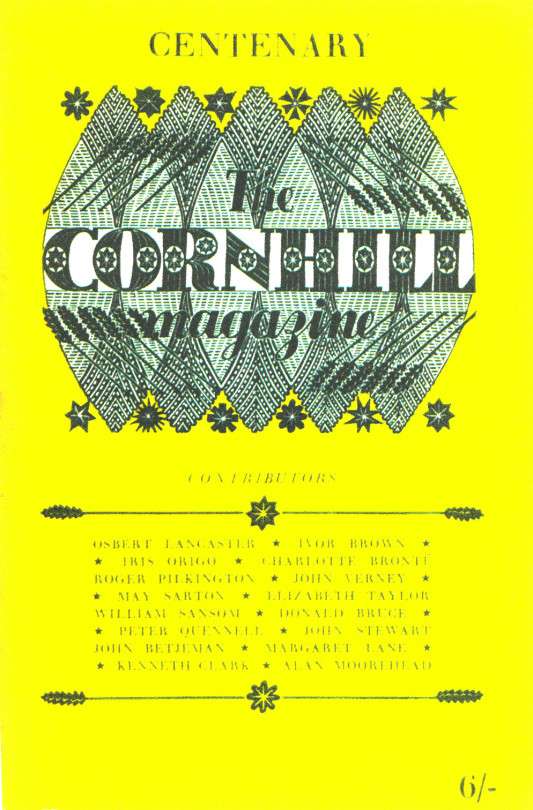
Centenary Edition of the Cornhill magazine, 1954

Eric Ravilious - Wheatsheaf for The Cornhill, 1936
The wheat sheaf design was commissioned by a young publisher called John Arnaud Robin Grey ('Jock') Murray who was on the staff of the Cornhill Magazine at the time, before going on to publish the likes of John Betjeman, Dervla Murphy and Patrick Leigh Fermor.
The design was to be used as a New Year’s Card, likely for the staff. Details from a letter from Eric to Jock:
I am sending you a print and the block of your wheatsheaf. It is rather more like an Autumn List than a New Year’s card - but perhaps you won’t mind that, and anyway I enjoyed doing the job. I’ll see you tomorrow at the party. †

Eric Ravilious - An Athlete, 1933
The moon and sun design features in this work from 1933 for Fifty-Four Conceits a book by Martin Armstrong.
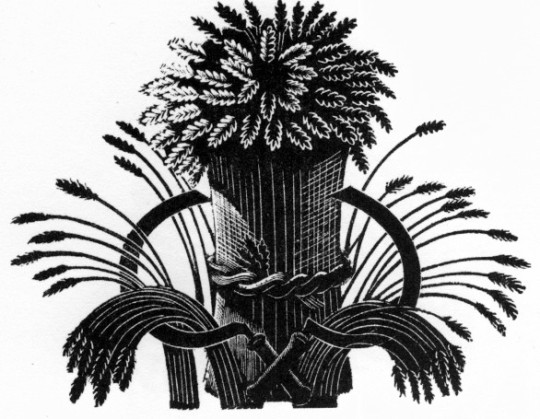
Eric Ravilious - Wheatsheaf for The Cornhill, 1936
In 1936 the block appears again but with the background washed out. Ravilious had painted printers white (for correcting errors in artworks) to edit out the background of the block. The printers then made the block into an electrotype metal block to print with for mass production with those areas cut out of the metal.

Eric Ravilious - Wheatsheaf that he sent to Jock Murray, painted out, 1936

Eric Ravilious - Title-page (Harvest Festival), Wood-engraving for the Cornhill Magazine, 1936
Ravilious was working on the Country Life Cookery Book at the same time as this commission for The Cornhill Magazine in the later part of 1936 and the project overlapped. So when one of the wood engravings was rejected by Jock Murray he used it on the cookery book. I thought this engraving was a bit surreal and over the top until I discovered a drawing of it below.
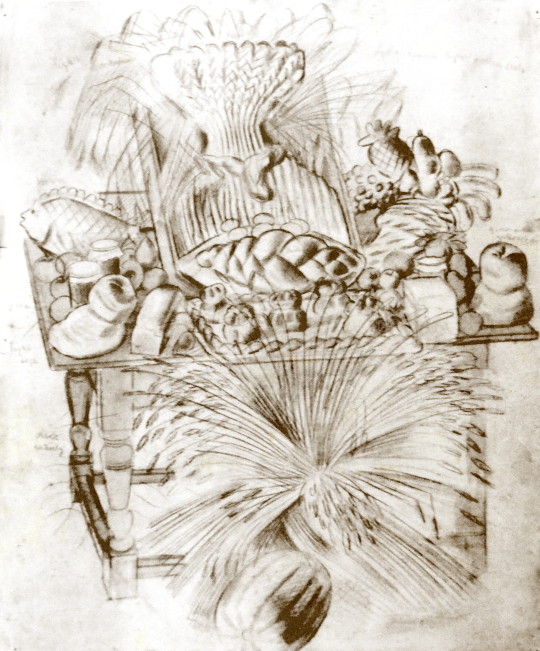
Eric Ravilious - Harvest Festival and Loaves, 1936
I’ve been drawing the bread table in the church - dead and fancy loaves, barley and corn, apples and eggs - and I thought it too beautiful not to place on record. ♠
Having been rejected for one job Ravilious cut away the framed backdrop of the table and submitted the wood-engraving below for the Cookery Book project instead.

Eric Ravilious - Title-page (Harvest Festival), Wood-engraving for the Country Life Cookery Book, 1937
Below is another woodblock based on the same image made for The Writings of Gilbert White of Selborne in 1938. It’s a new version and not an edited restrike. Likely cut in 1937 as the job was commissioned in May of that year and the book published in 1938.
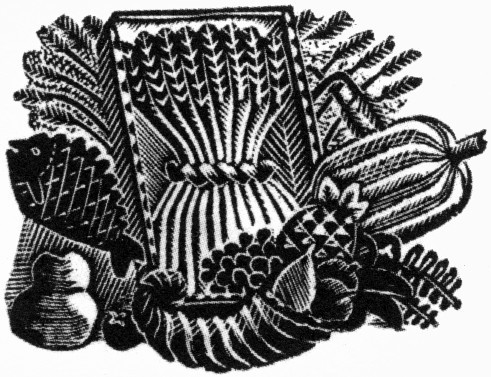
Eric Ravilious - (Harvest Festival), Wood-engraving for The Writings of Gilbert White of Selborne in 1938
One of the commissions for The Cornhill Ravilious got was a Spring and Autumn woodblock. Below is the Spring wood-engraving looking like an explosion of nature with a Cuckoo in the centre.

Eric Ravilious - Cuckoo
The same Cuckoo can be seen in the Gilbert White book again on the woodcut in Volume II on p243. To the bottom left corner.
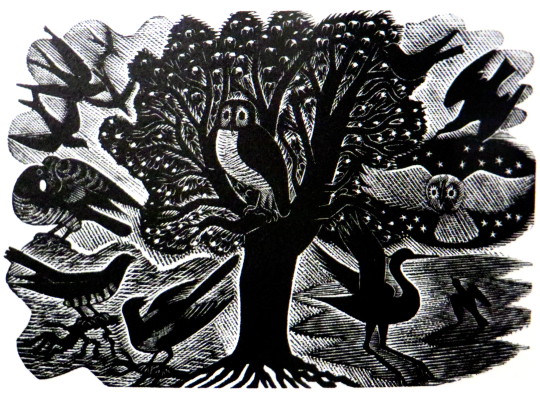
Eric Ravilious - Requirements of an Ornithologist, 1938
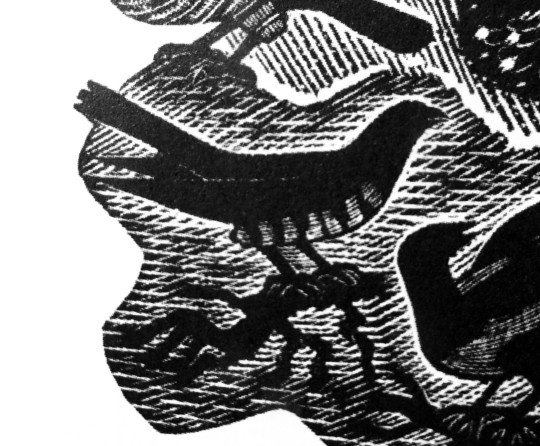
Eric Ravilious - Requirements of an Ornithologist, 1938 (detail)
Below is a woodcut for the four seasons. Holly for winter, bulb-flowers for spring, under a rose for summer and a selection of leaves for autumn.
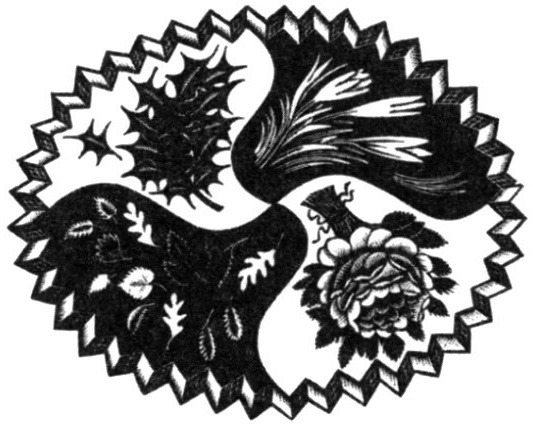
Eric Ravilious - Four Seasons, 1932
In a letter from Ravilious to Jock Murray, 7 January 1932:
I am so glad you like the design for your Quarterly List here is the block with a few amendments. I have made the border lighter as you suggested, and I think that was a good idea. †

The wood engravings were used in black for subscription notices inside the magazine and in colour in Greetings Cards when one subscribed to the magazine as noted in the advert above and pictured below. The rose was presumably uppermost in the summer with warm red and the holly in the winter in a cool blue.

Cornhill Magazine Greetings Cards

Eric Ravilious - Complement Slip for the Cornhill Magazine using ‘Autumn Fruits’, 1936

Eric Ravilious - Autumn Fruits, 1936
The wood-engraving above, Autumn Fruits, would have been copied from the painting below, and in the printing process it appears reversed. Ravilious as we know was a great recycler of his work.

Eric Ravilious - Trugs with Fruit, 1936
The same trug appears in the wood engraving for the Country Life Cookery Book’s vignette ‘April’. The job came at the same time as the Cornhill Magazine commission. The watercolour of Trugs of Fruit above has the same trug in the ‘April’ wood engraving. The fruit is presumed to be full of redcurrants as it is also next to mint and a lamb.

Eric Ravilious - April, Wood-engraving for the Country Life Cookery Book, 1937
The cornucopia was also a popular device used by Ravilious and appears in the ‘Autumn Fruits’ wood-engraving / complement slip for Murray. It too was recycled into a wood engraving for the Country Life Cookery Book for ‘July’.

Eric Ravilious - July, Wood-engraving for the Country Life Cookery Book, 1937
♠ Eric Ravilious to Helen Binton - 6th October, 1936 † Jeremy Greenwood - Eric Ravilious Wood Engravings, 2008
5 notes
·
View notes
Text
Punjene paprike - Vesna Pavlović
New Post has been published on https://recepti-kuvar.rs/punjene-paprike-vesna-pavlovic/?Punjene+paprike+-+Vesna+Pavlovi%C4%87 Recepti+i+Kuvar+online
Punjene paprike - Vesna Pavlović
Punjene paprike.
Punjene paprike, sastojci:
Za nadev:
600 g mlevenog mesa,
po potrebi ulje,
3 glavice crnog luka,
2 čena belog luka,
po ukusu začini (so, biber i suvi začin),
2 kašike slatke začinske paprike,
2 paradajza,
50 g pirinča,
1 šargarepa.
Za zatvaranje paprika:
po potrebi paradajz.
Za zapršku:
po potrebi ulje,
2 kašike brašna,
400 ml vode,
200 ml pasiranog paradajza,
1 kašičica šećera.
I još:
8 paprika babura.
PROČITAJ: Domaći hrskavi hleb bez mešenja
Punjene paprike, priprema:
Za nadev:
Na zagrejanom ulju upržiti sitno seckan crni luk.
Dodati rendanu šargarepu, opran, oljušten i iseckan paradajz, sitno seckan beli luk i propržiti.
Umešati mleveno meso i upržiti.
Dodati pirinač i kratko propržiti.
Začiniti po ukusu (posoliti, pobiberiti i umešati suvi začin).
Dodati slatku začinsku papriku i izmešati kako bi se sastojci sjedinili.
Skloniti šerpu sa ringle i ostaviti da se nadev ohladi.
Paprike babure dobro oprati, očistiti od peteljki i semenki i puniti ih pripremljenim nadevom.
Paradajz oprati, iseći na kolutove i njima zatvoriti paprike.
U pleh u kome će se paprike peći nasuti vodu i poređati pripremljene paprike.
Prekriti ih alu-folijom i peći u dobro zagrejanon rernina 180 stepeni sat vremena.
Za zapršku:
Na zagrejanom ulju upržiti brašno, dodati vodu, pasirani paradajz, šećer i mešati kako bi se sastojci sjedili.
Izvaditi pleh iz rerne, ukloniti foliju i preliti paprike zaprškom.
Vratiti pleh u rernu, ali ne prekrivati folijom.
Peći još 30 minuta na 180 stepeni (po potrebi smanjiti temperaturu kako paprike ne bi gorele).
Vreme pripreme: 130 minuta Broj porcija: 4 Težina pripreme: Lako se priprema Mrsno jelo
Savet: možete koristiti mešano mleveno meso ili svinjsko – po sopstvenom izboru. Umesto ulja, možete koristiti svinjsku mast (i ja je ponekad koristim umesto ulja), budu ukusnije paprike. Prijatno!
Vesna Pavlović
PROČITAJ: GDE MOŽE DA SE KUPI KNJIGA TRADICIONALNI RECEPTI DOMAĆE SRPSKE KUHINJE?
Pročitajte još:
Portal Recepti i Kuvar online je svrstan u TOP 50 sajtova u Srbiji!
Ukoliko vas interesuju svi naši recepti, kliknite na link: RECEPTI. Zbirke najboljih recepata naših saradnika nalaze se u sekciji kuvar, ukoliko želite više da pročitate, klikinte na link: KUVAR. Ukoliko želite da pogledate našu naslovnu stranu, kliknite na link: RECEPTI I KUVAR ONLINE homepage.
Ne propustite nijedan recept – Recepti i kuvar online na Facebook-u. Ostanite u toku, pratite Recepti i Kuvar twitter obaveštenja!
#babure#beli luk#biber#brašno#crni luk#kuvar#mast#mleveno juneće meso#mleveno svinjsko meso#mlevno meso#najbolji tradicionalni recept#paprike#paprike babure#paradajz#pasirani paradajz#pirinač#recepti#šargarepa#šećer#so#stara jela#stari recepti#starinska jela#starinski recepti#suvi začin#tradicionalni recept#tradicionalni recepti#ulje#voda#začini
0 notes
Link
Laptop Sticker Görele, en uygun fiyatlarıyla Trenvay.com'da sizileri bekliyor. Uygun fiyatlı Laptop Sticker Görele ile evlerinizi güzelleştirin.
0 notes
Text
2017 in Book Reviews
So I did this shit last year, but this year was way more impressive. Counting Discworld novels, I read 29 books last year, but this year I read 40 books, even though I did not intend to do so. Pretty fucking ace if I do say so myself.
January The Ocean at the End of the Lane (Neil Gaiman) (8.5/10) Camera Obscura (Lavie Tidhar) (7/10) Railsea (China Mieville) (6.5/10)
February The City of Ice (KM McKinley) (9/10) Gestapo Mars (Victor Gischler) (8.5/10)
March Anno Dracula 1899 and Other Stories (Kim Newman) (6.5/10) The Builders (David Polansky) (8.5/10) Johannes Cabal: The Fear Institute (Jonathan L Howard) (8.5/10)
April The Malice (Peter Newman) (8/10) Gorel and the Pot-Bellied God (Lavie Tidhar) (5/10)
May Mythago Wood (Robert Holdstock) (8/10)
June Welcome to Night Vale: A Novel (Joseph Fink and Jeffrey Cranor) (7/10) Shades of Grey (Jasper Fforde) (8.5/10) Grendel (John Gardner) (8/10)
July This Book is Full of Spiders: Seriously Dude Don’t Touch It (David Wong) (7.5/10) The Brothers Cabal (Jonathan L Howard) (9/10)
August The Eyre Affair (Jasper Fforde) (8.5/10) War for the Oaks (Emma Bull) (7.5/10) Ready Player One (Ernest Cline) (8.5/10) Mortal Engines (Stanislaw Lem) (7.5/10) Dirk Gently’s Holistic Detective Agency (Douglas Adams) (8/10)
September Mistborn: The Bands of Mourning (Brandon Sanderson) (7.5/10) The Corpse-Rat King (Lee Battersby) (5/10) Dreams and Shadows (C Robert Cargill) (9/10) Moon Over Soho (Ben Aaronovitch) (7/10) The Goddess of Buttercups and Daisies (Martin Millar) (5.5/10)
October The Bear and the Nightingale (Katherine Arden) (8.5/10) Stardust (Neil Gaiman) (8/10) Lost in a Good Book (Jasper Fforde) (9/10)
November Queen of the Dark Things (C Robert Cargill) (8/10) A City Dreaming (Daniel Polansky) (7.5/10) The Masked City (Genevieve Cogman) (6.5/10)
December The Fall of the House of Cabal (Jonathan L Howard) (8.5/10) The Circus of Dr Lao (Charles G Finney) (6/10) Red Country (Joe Abercrombie) (7/10)
My five favourite books this year were, in order, The Brothers Cabal, Dreams and Shadows, The City of Ice, Lost in a Good Book, and Shades of Grey. 2016 was the year of a surfeit of Sanderson, 2017 was the year of a fuck-tonne of Fforde.
At the end of last year I said I would read a load of other books in the new year, but of the books that I listed I only actually read four of them. To be honest I don’t know what I’ll be reading next year (although the next book I’m definitely gonna be reading is The Well of Lost Plots by Fforde). I’m going to try to read some more classics next year, or at least catch up on some authors outside of the fantasy genre that I’ve been interested in in the past; Cervantes, Poe, Gogol, Hoffman, Rabelais, some more Chaucer, Bulgakov, and my mate Reader got me the Folio edition of A Clockwork Orange for Christmas (cheers geez) so I’ve got no choice but to finally get around to reading that. I doubt I’ll be reviewing such books, so there may not be as many book reviews next year. Fuck it man, we’ll see.
Any recommendations, please send ‘em my way. Yes, I’m talking to you, person who has actually read this far. I’m surprised you got to the end of this. Thanks man, you’re the reason I do this.
Merry Christmas lads <3.
#book reviews#2017 overview#personal#i swear a solemn oath that i will fucking read and finish Don Quixote next year
1 note
·
View note
Text

3 D
youtube
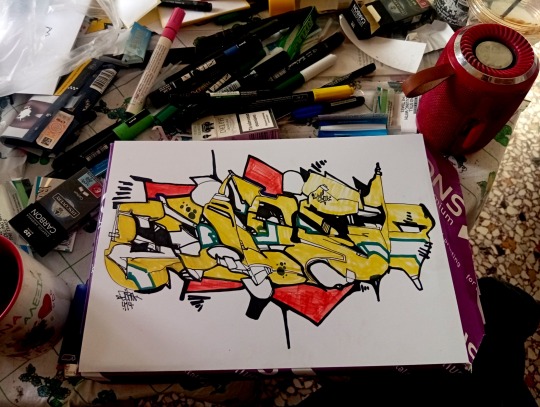
GoreL 414
G

Yo
G
#Gorel 414#underground#smog 645#graffiti#dark#alternative#art#vandal tags#abstracart#abstract#vandalic#graffiti vandal#graffiti art#harris#german style#Youtube
1 note
·
View note